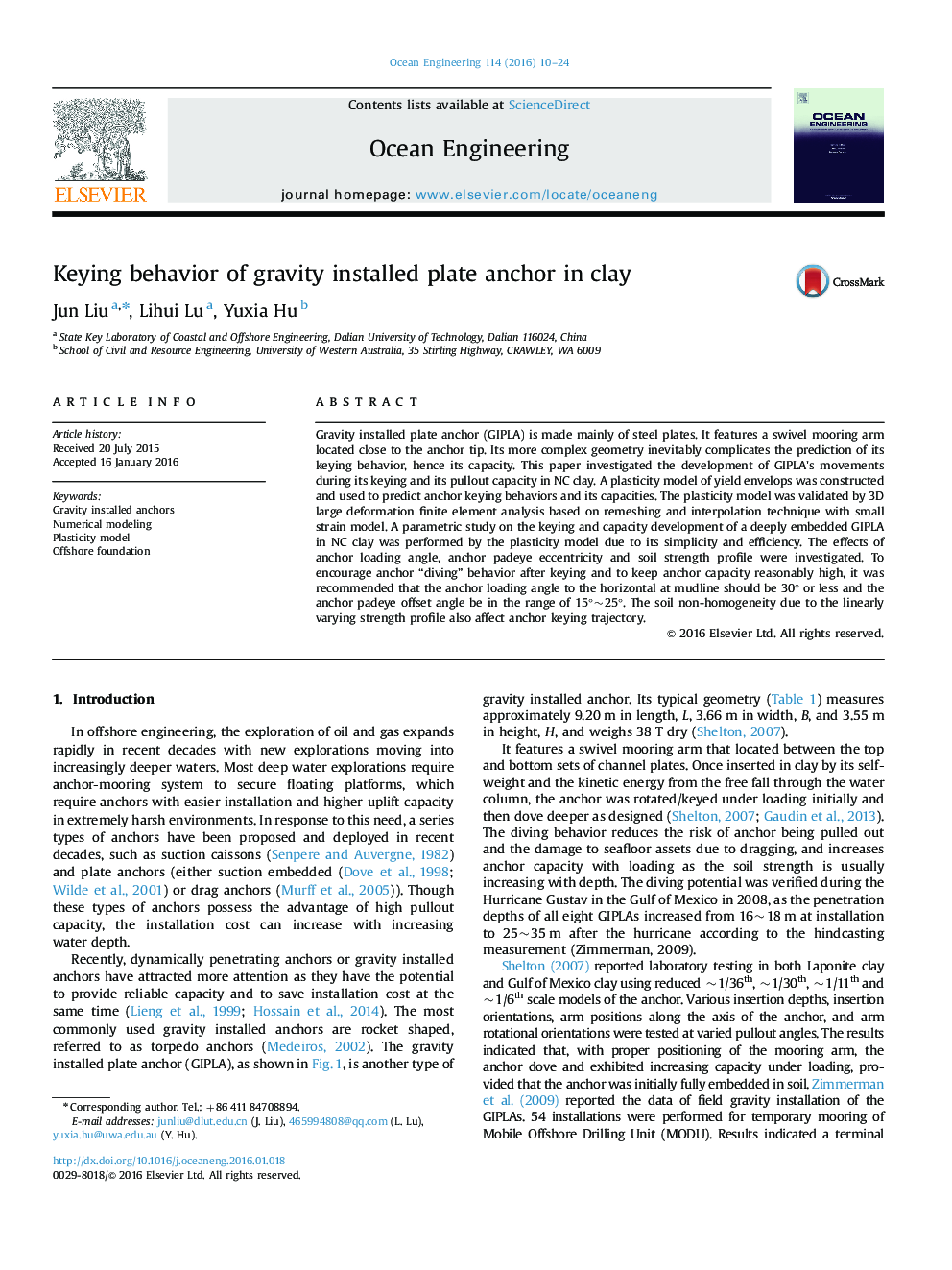| Article ID | Journal | Published Year | Pages | File Type |
|---|---|---|---|---|
| 8064613 | Ocean Engineering | 2016 | 15 Pages |
Abstract
Gravity installed plate anchor (GIPLA) is made mainly of steel plates. It features a swivel mooring arm located close to the anchor tip. Its more complex geometry inevitably complicates the prediction of its keying behavior, hence its capacity. This paper investigated the development of GIPLA׳s movements during its keying and its pullout capacity in NC clay. A plasticity model of yield envelops was constructed and used to predict anchor keying behaviors and its capacities. The plasticity model was validated by 3D large deformation finite element analysis based on remeshing and interpolation technique with small strain model. A parametric study on the keying and capacity development of a deeply embedded GIPLA in NC clay was performed by the plasticity model due to its simplicity and efficiency. The effects of anchor loading angle, anchor padeye eccentricity and soil strength profile were investigated. To encourage anchor “diving” behavior after keying and to keep anchor capacity reasonably high, it was recommended that the anchor loading angle to the horizontal at mudline should be 30° or less and the anchor padeye offset angle be in the range of 15°~25°. The soil non-homogeneity due to the linearly varying strength profile also affect anchor keying trajectory.
Related Topics
Physical Sciences and Engineering
Engineering
Ocean Engineering
Authors
Jun Liu, Lihui Lu, Yuxia Hu,
